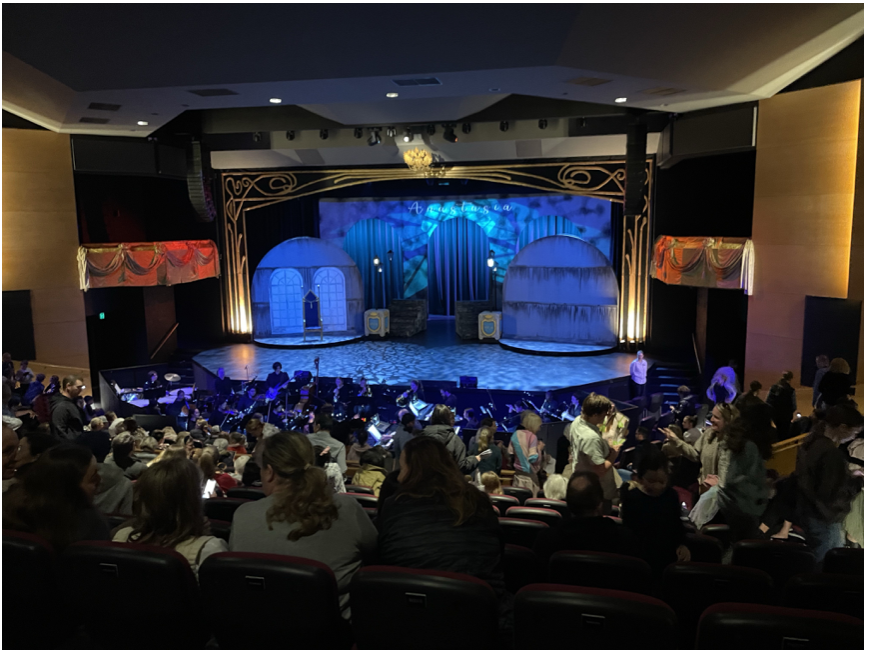Drama Tuesday - An afternoon matinee
/Liz and I went to the St Mary’s Anglican Girls School production of Anastasia The Musical. There are Old Girl connections with the school for Liz at different levels: Liz was a scholarship girl at the school when it moved to the Karrinyup site; the director of the production is the daughter of Liz’s best friend from St Mary’s and has just moved to teach there and this is her first production.
Effective production with pace and energy, advancing the narrative with good drive and efficient scene changes with two small revolves on stage. Strong singing performances Anastasia The Musical is not a well known production and I haven’t seen it produced before. The music by Flaherty and Ahrens, bubbles along pleasantly.
This is only the second time I’ve been at the Lady Wardle Performing Arts Centre; the other time was for a BlackSwan production of Cosi.
Two interesting lines of thought: the venue and the choice of production.
School venues
There are now a significant number of schools in the Perth region with these large scale venues. This trend reflects commitment to performing arts and it is interesting to see the design approach.
This theatre seating 518 in three blocks that fan wide from the stage. The stage is wide and projects into the audience though is not a full thrust stage. As I sat in the audience, seating quite heavily raked above the action, I kept thinking about the challenges for directors There’s quite a distance to the wings from centre stage and the action is projected forward. There was a tendency for actors to move downstage centre in every scene. The nicely presented stage images relied on a sense of symmetry. The Juliet balconies on either side provide opportunities. But the width of the stage presented a need for brisk exits and entrances to maintain the pace.
The sound balance with the orchestra being amplified also presents challenges.
Production Choices for Schools
My other line of thought was about the choice of Anastasia. Not because it was new – we are always looking for fresh and interesting productions to challenge and excite our students. I was thinking about the issues of choosing plays for single gender schools, like St Mary’s. This production brought in four males students from other schools (one from Liz’s school).
But during the first act, I noticed that the action resolved largely around four roles – one female, the role of Anastasia; the other three were male. There was a fleeting scene with the Dowager who figured strongly in Act 2. There were many other on stage chorus roles, plenty of colour and spectacle, yet the dramatic action was narrowly focused. The second act added developed the role of the Dowager and added another extended major female role. As a script, Anastasia is actually a star vehicle. This production relied very much on the strong male leads with relatively limited roles for female students.
But this script is indicative of the dilemma faced by many teachers selecting productions. The balance of roles for students often doesn’t reflect the reality of enrolments.
Some single gender schools, resolve the issues by partnering with other single gender schools. Even in co-educational students, particularly where there are more female students than males, there are still issues about the balance of roles available.
What is the best repertoire for single gender schools?
What is the best music theatre repertoire for single gender schools?
Or for schools in general?
This is particularly an issue in choosing plays that provide strong roles for female students. We all know how difficult it can be if you want to stage Shakespeare’s plays.
You could take the line (as one feisty drama teacher did) and simply cast from within the actors available in the school and have some students play cross gender roles. [Certainly, in my schooling in an all boys school in another century we did that and my first on stage role was as one of the “Sisters, Cousins and Aunts” in The Pirates of Penzance.] Earlier this year we saw the John Curtin College of the Arts production of Jesus Christ Superstar with female leads playing the role of Jesus. There is the argument for “blind casting” made. But the climate for arts education is supercharged and there are new challenges for all.
Quick snap of the theatre at the end of the production as the audience were filing out after applause.








